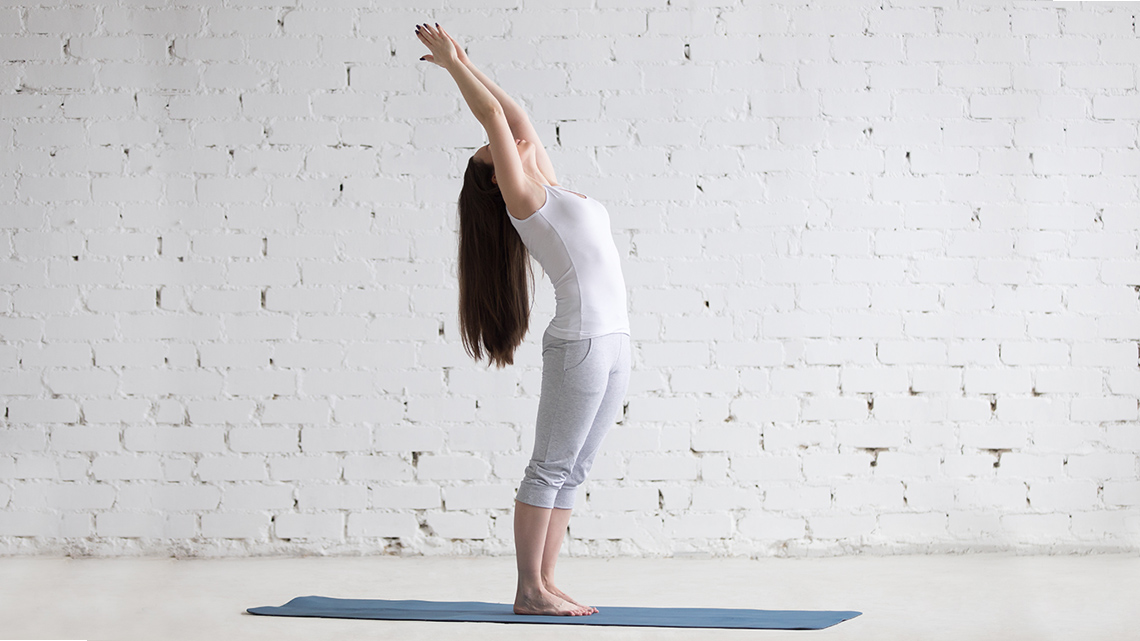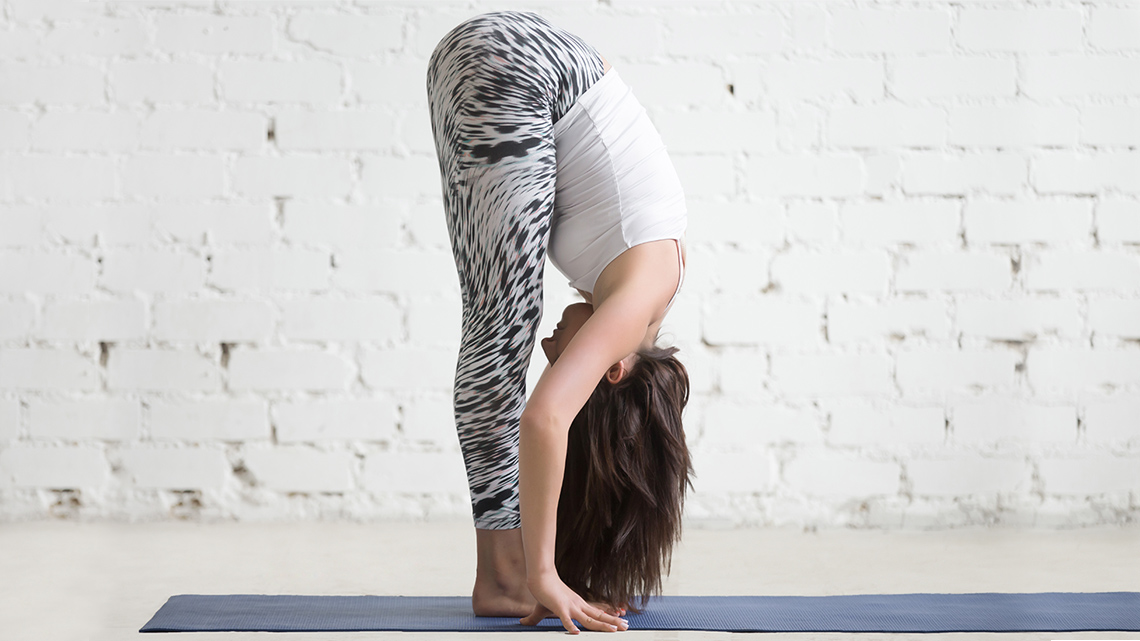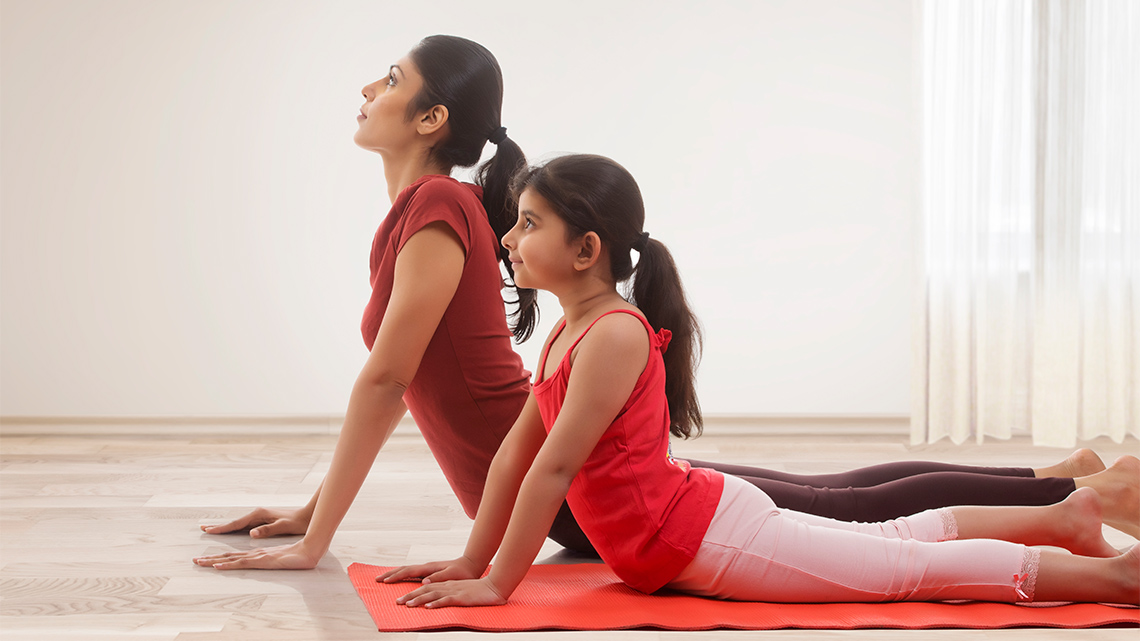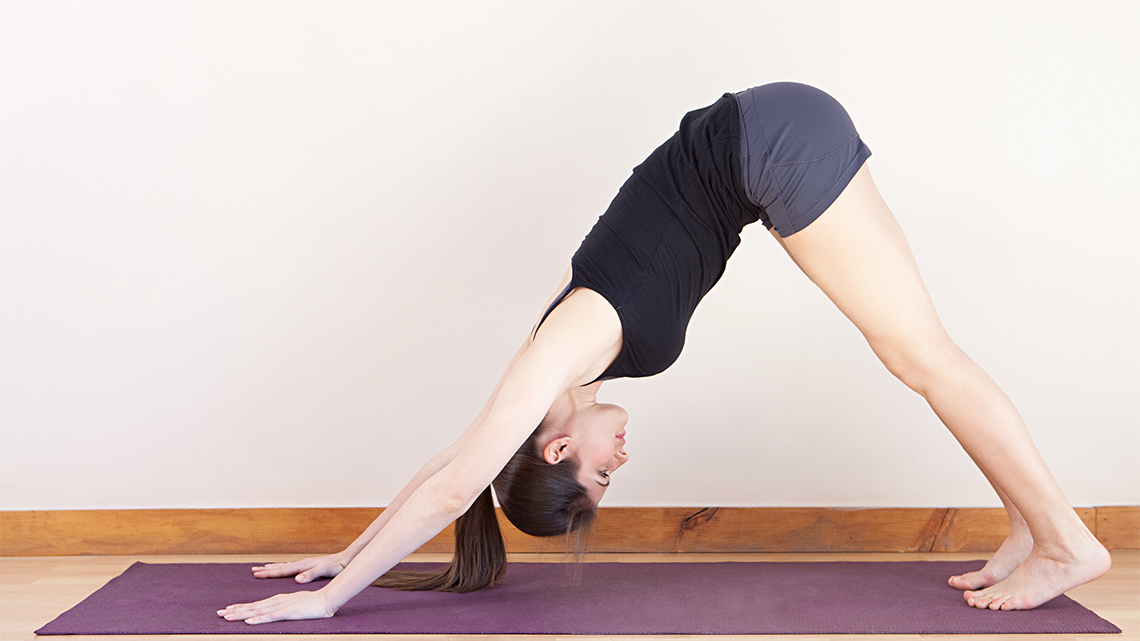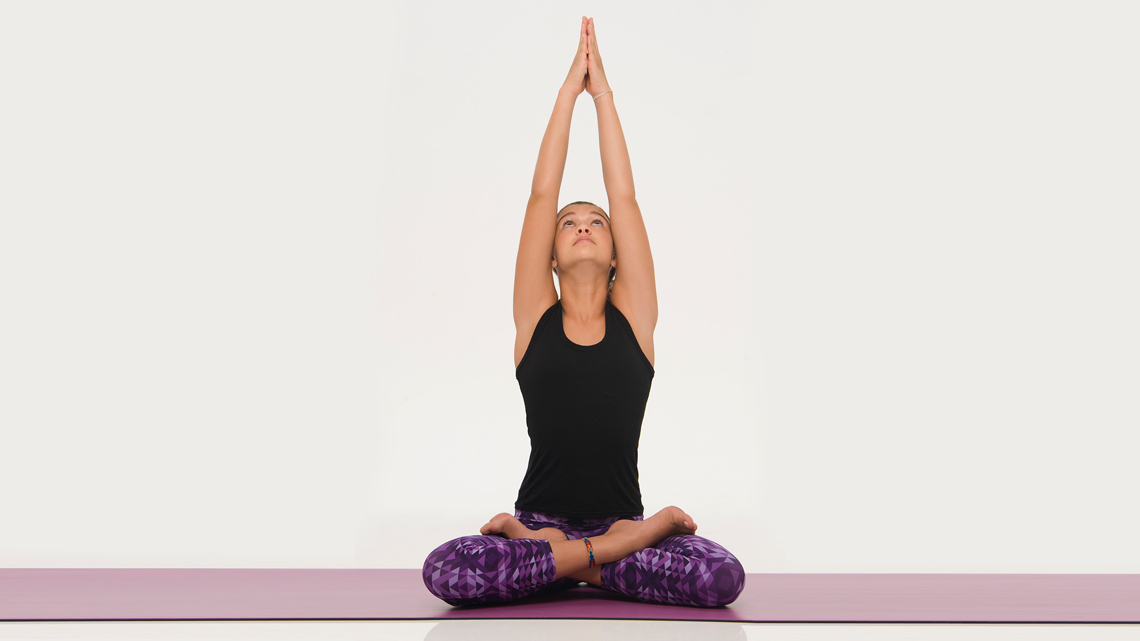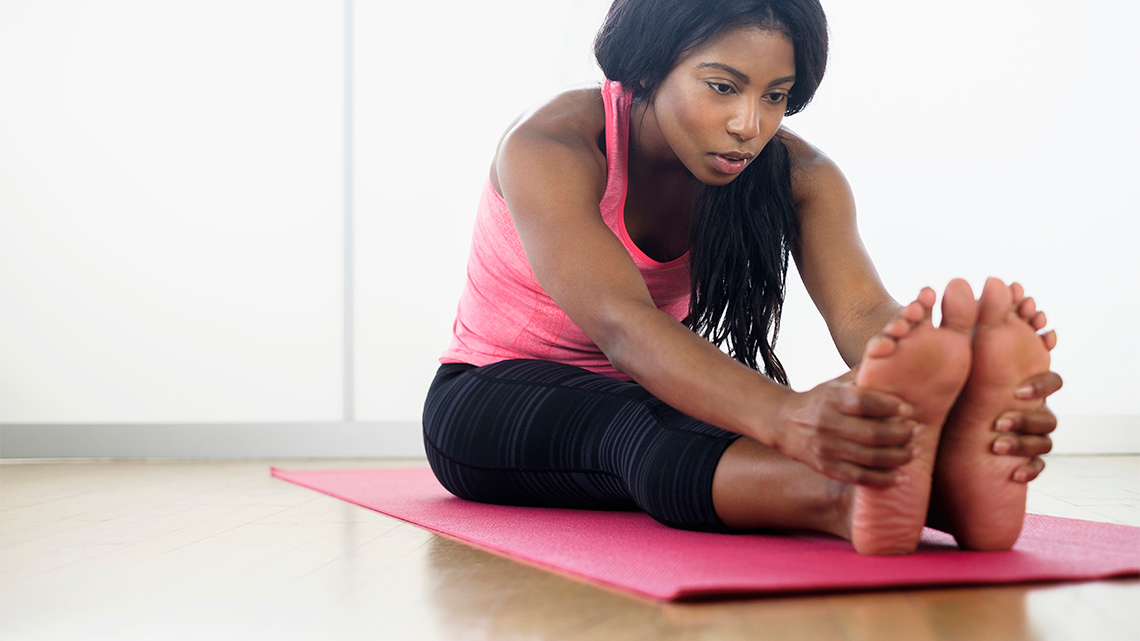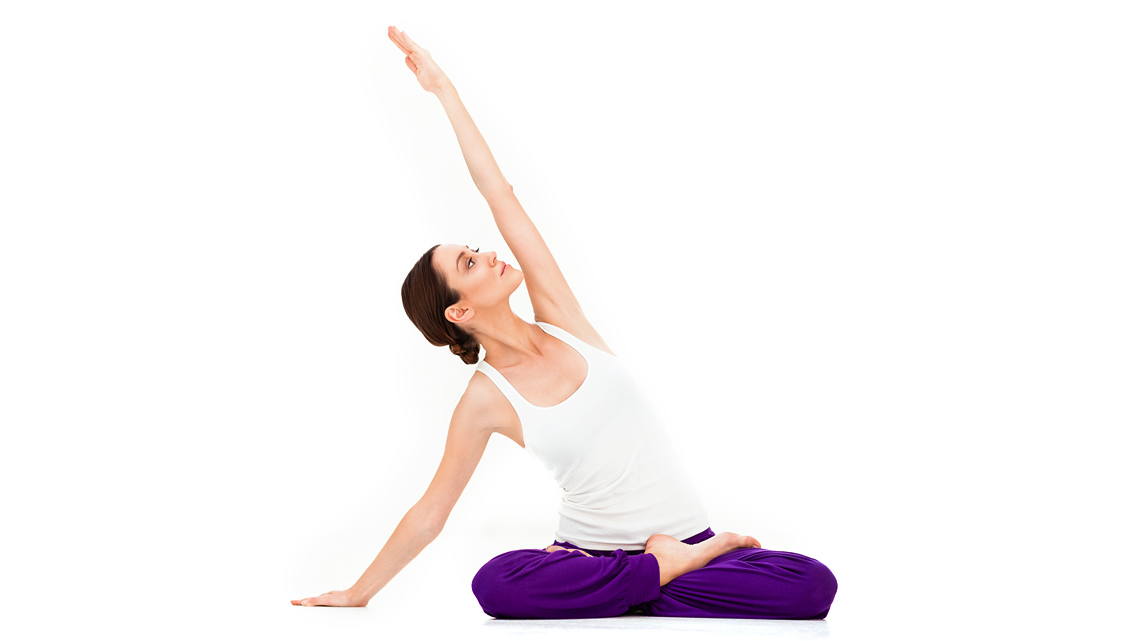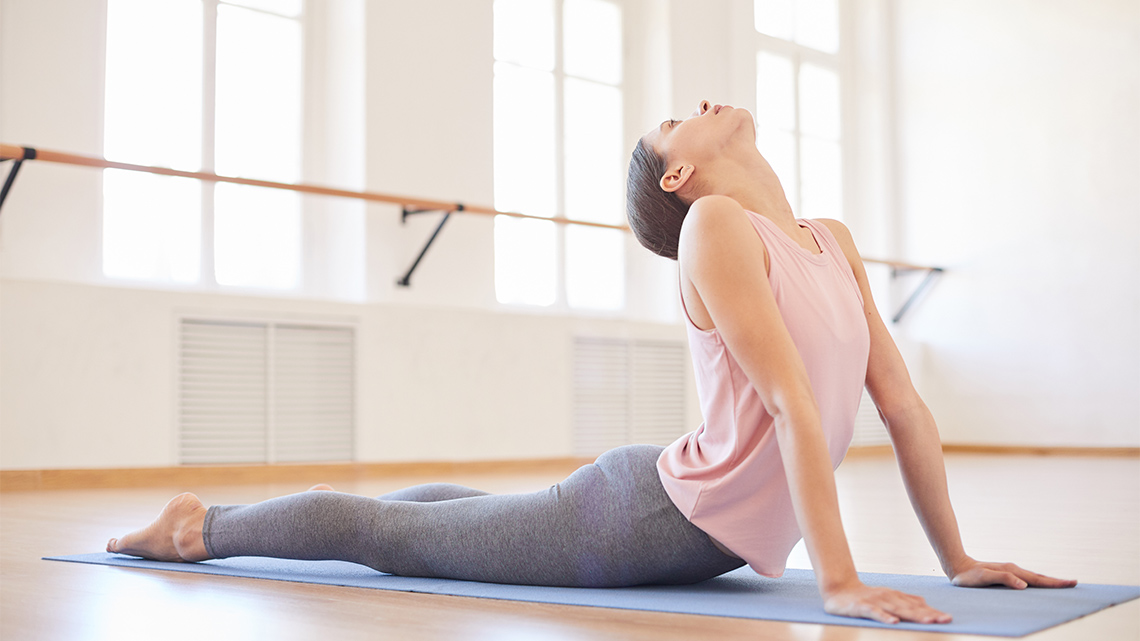Minds On
How do you feel?
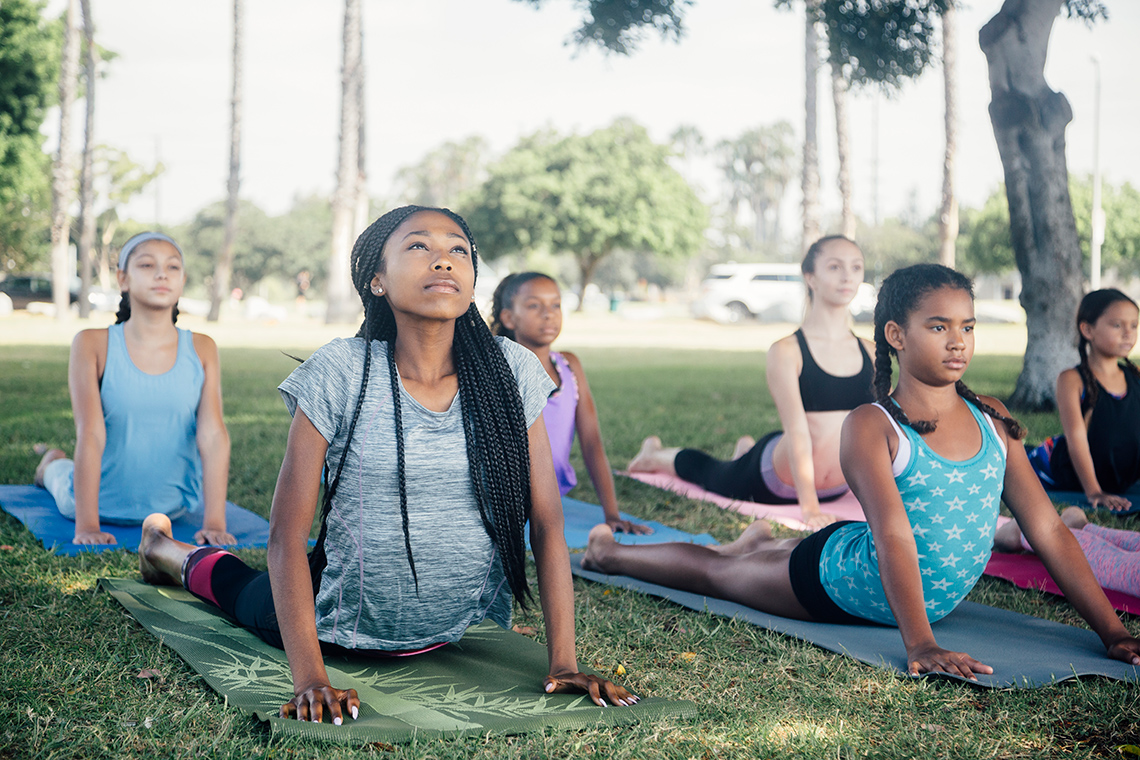
Breathing mindfully while performing a variety of stretches can help to calm and relax our bodies. There are many forms of stretches. Some support calm, others improve our balance. There are some stretches that help us feel more energized.
Brainstorm
Feeling calm or energized
Begin by reflecting on any tools or practices you know of or already use to help people feel calm (e.g., mindfulness of breath, peace corner, slowing down, and noticing sounds).
Now, reflect on what helps people feel more energized (e.g., playing with a pet or friends, running, and time outside).
Complete the Calm or Energized Organizer in your notebook or using the following fillable and printable document. If you would like, you can use speech-to-text or audio recording tools to record your thoughts.
| Activities/tools that help people feel calm: | Activities/tools that help people feel energized: |
|---|---|
| 1. | 1. |
| 2. | 2. |
| 3. | 3. |
| 4. | 4. |
Press the ‘Activity’ button to access Calm or Energized Organizer.
As you begin to explore various yoga poses, pay attention to which makes you feel calmer or more energized.
Let's reflect
Before you begin, record how you feel right now. Press the button in the checklist below beside the emotion that best describes how you’re feeling.
How do you feel?
How do you want to feel after being active today?
Action
Stretching poses
 Description
Description
Three people stretching in different poses. The person on the left is in a lunge with their hands in front of their chest. The person in the middle balances on one leg with their hands above their head. The person on the right has their legs spread apart and reaches one hand towards their foot and the other to the ceiling.
Stretching as a form of exercise can be made up of a series of different poses. These poses can vary in their appearance and purpose. When transitioning between one pose to another, you create something called a yoga flow.
Explore the following flow between the two poses shown.
Flow Between Poses
A person stands facing to one side with two feet spread wide apart. One foot is pointed straight to the side where the person is facing. The knee is bent above that foot and the thigh is parallel to the floor. The other leg is stretched with the foot pointed perpendicular to the first foot. The person’s arms are spread out straight with palms parallel to the floor. As the person inhales, the arm above the bent knee lifts up with the palm facing away from the floor. The person moves the other arm down at the same time, stretching it so that the hand rests on the leg. The pose ends with the person looking up at the hand above the head.
Static and dynamic movements
A flow often includes a warm up, balancing and energetic poses, and a cool down. You will be practicing stretching poses. These poses will include both static and dynamic movements.
Press the following tabs to access examples of static and dynamic movements.
Static balance is a stability skill where the body maintains a desired shape in a stationary position.
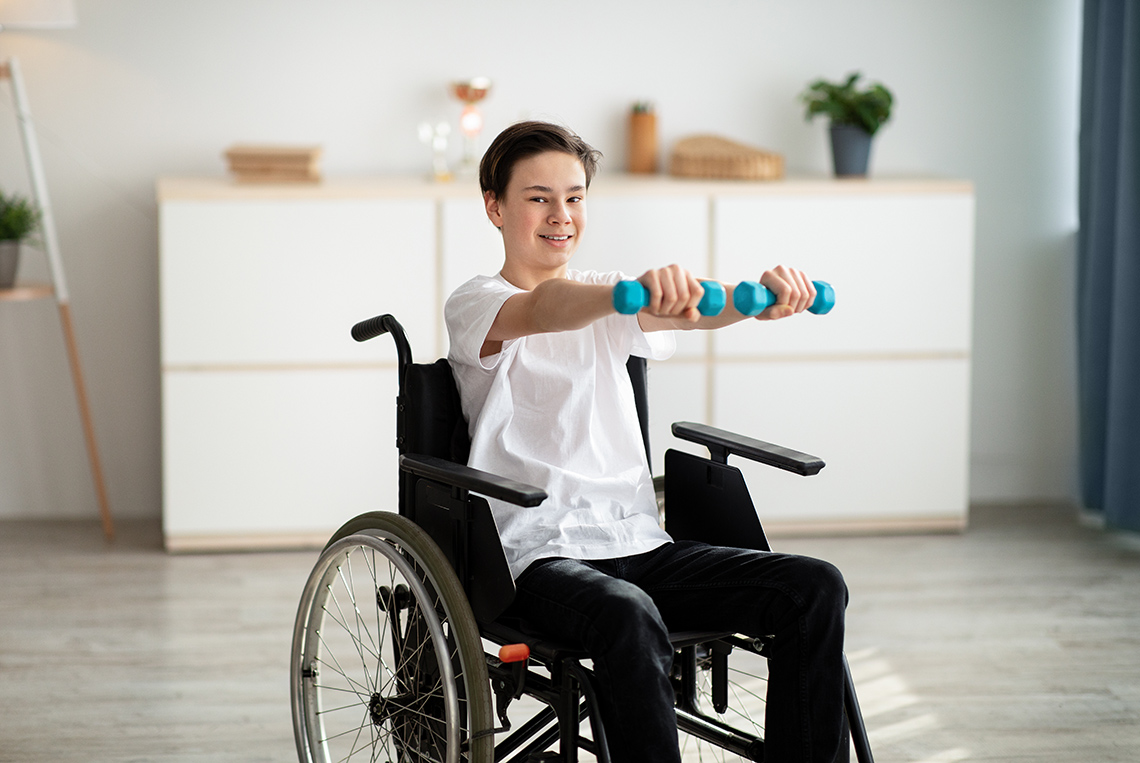
Dynamic balance is a stability skill where core muscles are used to maintain balance and control of the body while moving through a space.
Activities like biking, climbing, and crawling strengthens the core muscles, which are the abs and back muscles that support the spine to keep the body balanced and stable.
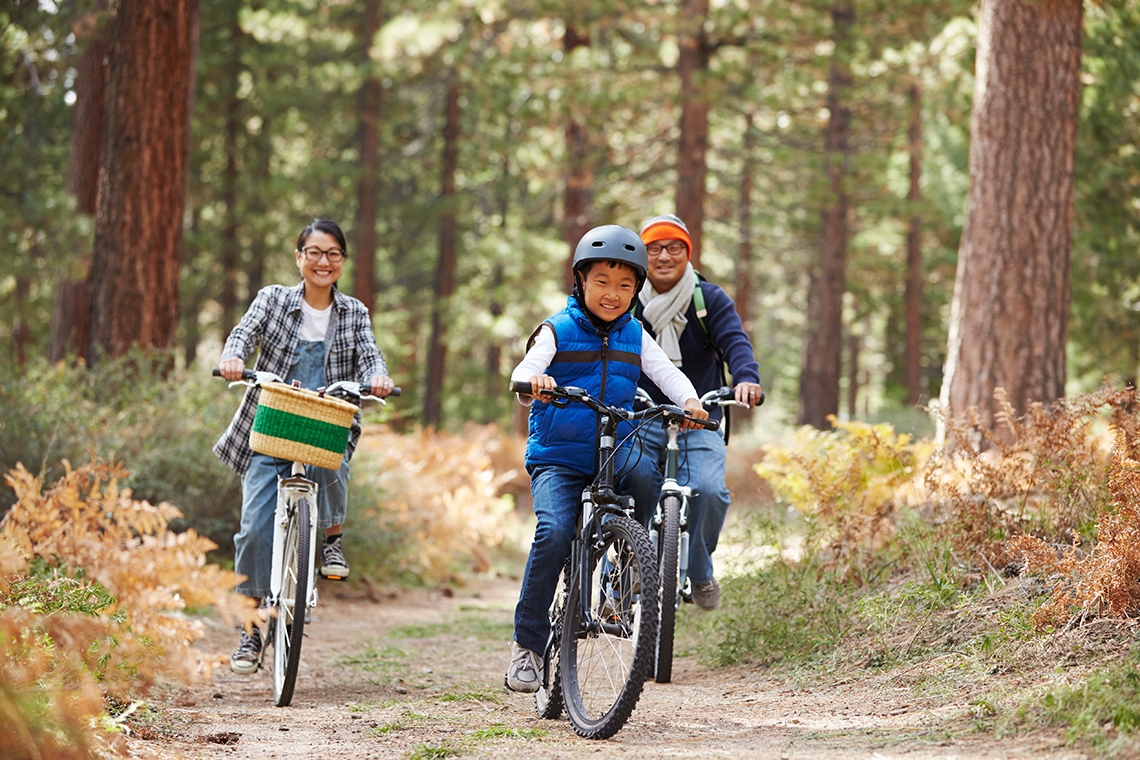
Let’s make sure we have the proper materials before beginning our yoga flow. Consider having the following equipment ready before attempting any activities:
- mat
- towel
- water
Press ‘Tip’ if you do not have a mat.
Instead of a mat, you can use a soft but sturdy, non-slip surface to perform these movements.
Safety
Before you begin, consider these safety precautions:
Warm Up
Warm up activity
Our warm up activity will include exploring various poses to get our bodies warmed up.
While performing these movements, consider:
- keeping your body tight and in control
- concentrating on your movements
- being aware of how your body feels
Let’s get moving
Explore the following two options and choose one to complete your stretches. As you perform these movements, consider which are static and which are dynamic movements.
Option 1: Standing
You will begin in a standing position for this activity.
Option 2: Seated
You will begin in a seated position for this activity.
Put it together
Now try putting all the movements together to complete your stretches.
If you chose option 1 in the previous section, you will perform your stretches.
If you chose option 2 in the previous section, you will begin in a seated position.
Let's reflect
Now that you have completed a series of stretches, it’s time to reflect on the flow between the movements.
Pause and Reflect
Thinking about flow
Answer the following questions using a method of your choice. If you would like, you can use speech-to-text or audio recording tools to record your thoughts.
- Which movements had a more natural flow. Why?
- Which movements had a flow that was not as natural. Why?
Static or dynamic
During the stretches, which actions did you believe were static? Dynamic? Use the following activity to decide which movements were static and which were dynamic.
For each statement below, select whether you think it is true or false.
Balance poses
Explore the following two options and choose one to complete your balance poses. As you are performing these movements, consider which you think are static and which are dynamic movements.
Option 1: Standing poses
Press the following tabs to access instructions on how to complete each balance pose.
Start at the front of your mat, feet together. Step back with a leg of your choice, with toes pointing slightly in. Turn your hips so that your chest is open and facing the left or right of you, not directly in front. Inhale and raise your arms, with one in front of you and the other behind you, going directly over your legs. Bend your front knee over your ankle and push into your back foot.
Start in a standing position. Place your legs wider than shoulder’s distance apart and keep them straight. Choose a leg and begin reaching the hand that is on the same side towards it (but not down). Bend forward until you can’t anymore, then reach down and place your hand on either the ground, your shin, or your knee. Bring your other arm up into the sky, creating a straight line with your arms.
Stand with your feet together. Take any foot and place it above or below the opposite knee. Do not put your foot directly on your knee. Once you are balanced, begin to squat with the leg still on the ground. You may either keep your hands to your side or above your head. Keeping your hands over your head will be harder. For an extra challenge, try closing your eyes!
Option 2: Seated poses
Press the following tabs to access instructions on how to modify the balance movements.
Start by sitting on a chair with your knees together, facing forward. Choose one leg and stretch it to one side so that your toes are pointing away from your body. Stretch your other leg in the opposite direction and try to push into your back heel. As you inhale, raise your arms and spread them wide to each side.
Start in a seated position, legs shoulder width apart. Choose a leg and begin reaching the hand that is on the same side towards it (but not down). Bend forward until you can’t anymore, then reach down and place your hand on either the ground, the side of your shin, or your knee. Bring your other arm up into the sky, creating a straight line with your arms.
Begin seated. Choose one foot, point your toes to the floor, and turn your knee to the side. Now, try raising your hands above your head. For an extra challenge, try closing your eyes!
Reflection
Now that you have completed your poses, consider the flow between the movements.
Pause and Reflect
Reviewing flow
Answer the following questions using a method of your choice. If you would like, you can use speech-to-text or audio recording tools to record your thoughts.
- Which movements had a more natural flow. Why?
- Which movements had a flow that was not as natural. Why?
Static or dynamic
Which actions did you believe were static? Dynamic? Use the following activity to decide which movements were static and which were dynamic.
For each statement below, select whether you think it is true or false.
Consolidation
Cool down and reflect

Before you begin your reflections, let’s cool down and make sure our bodies are relaxed and our heart rates our low.
Cool Down
Let’s cool down
We’ll cool down with a few poses! These poses and stretches will help calm our bodies.
Press the following tabs to access instructions on how to do each pose.
Begin by lying on your back. Grab your big toes with your index and middle fingers. You may also grab the inside or outside of your foot with your hand.
Gently bring your toes and feet down so your knees pull toward your shoulders. Keep your elbows gently pressed against your knees.
Relax and breathe. Hold for 30 seconds.
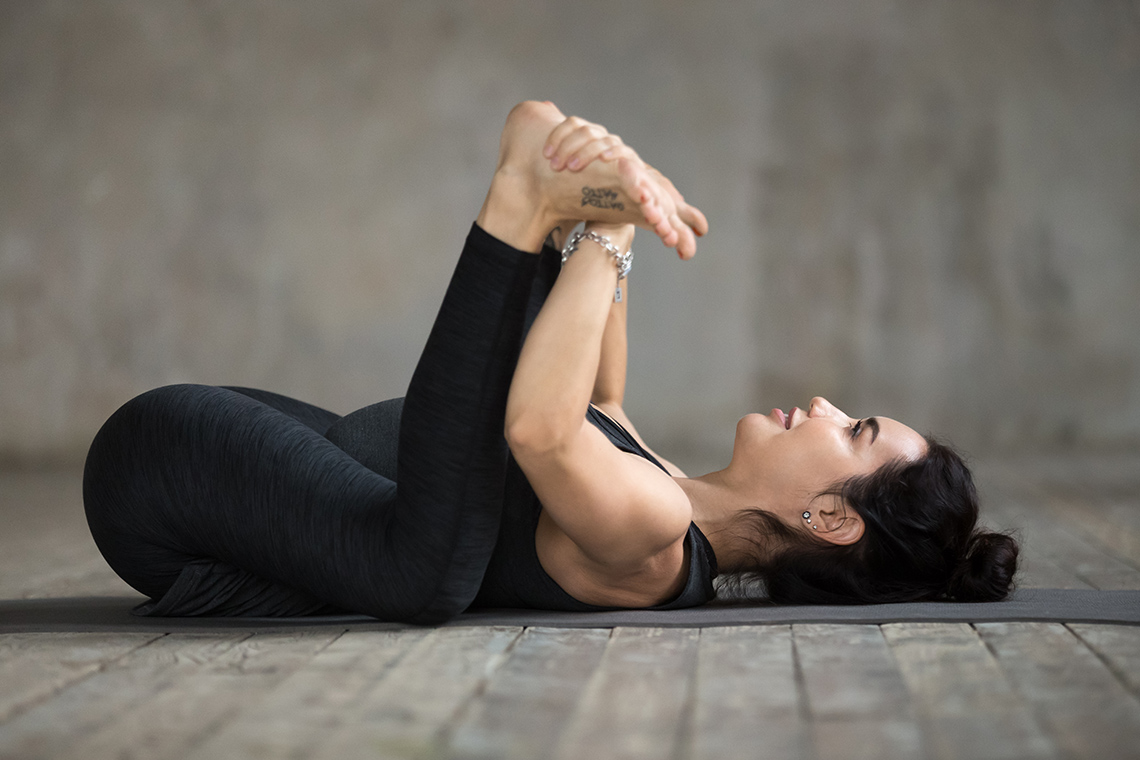
Begin in a seated position.
Bending from the hip, so your chest is coming down towards your knees. As you do, have your arms straight and in front of you.
When your chest is above your knees, reach your fingers down as close as possible to your toes. Hold for 30 seconds.
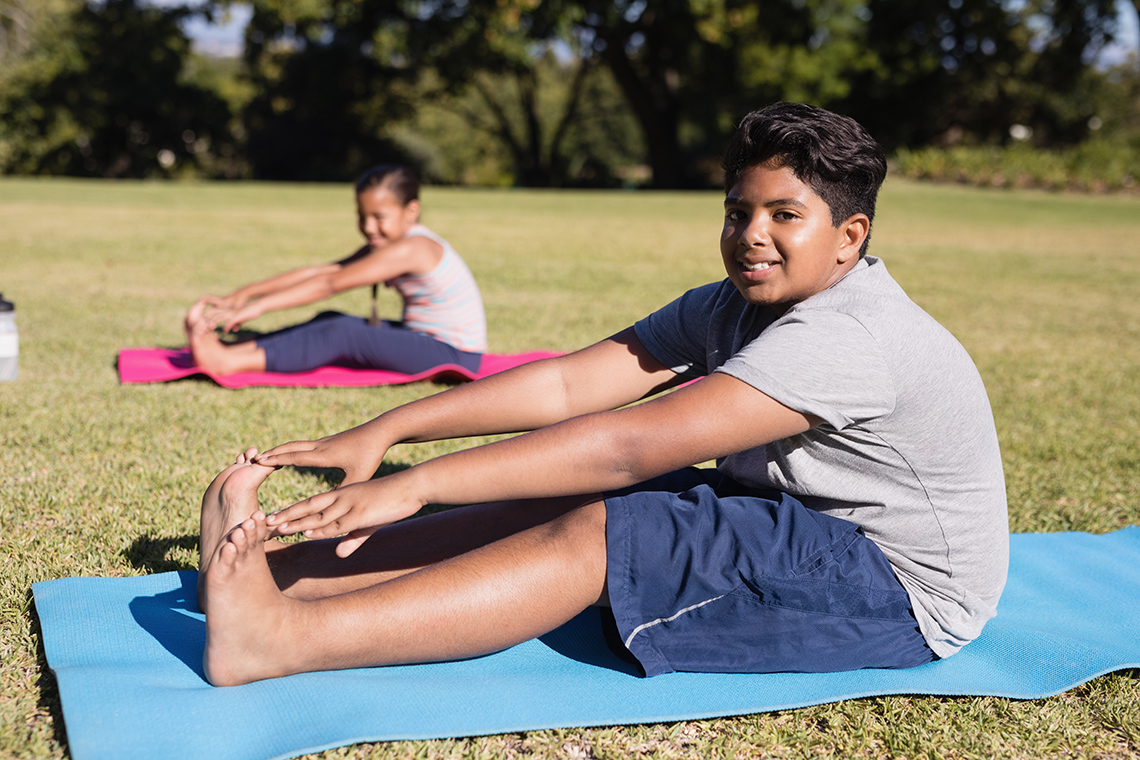
Starting on your knees, sit back on your heels and inhale.
Exhale as you bring your arms in front of you, bringing your torso down so that you can rest your forehead on the mat.
Rest your arms by your sides with your palms facing up near your feet.
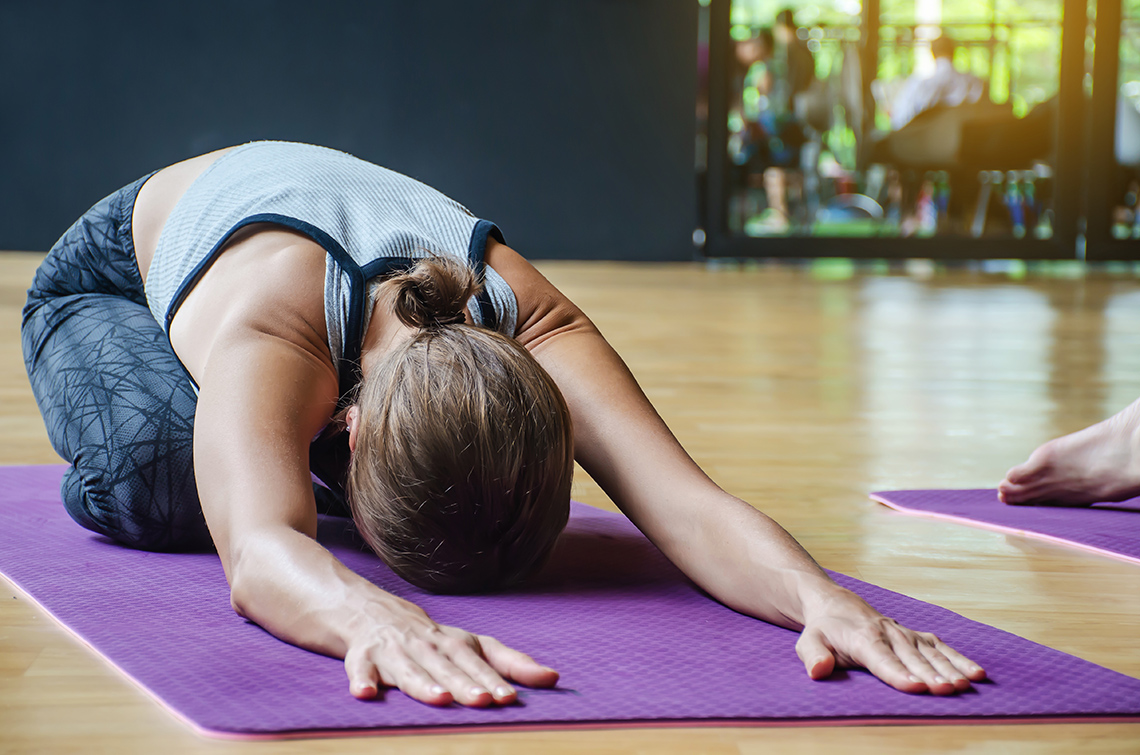
Calming or energizing?
Now that you have explored various types of stretches and poses, let’s reflect on how you felt as you were performing the movements. Did you feel calm, energized, or perhaps both?
Complete the Pose Reflection in your notebook or using the following fillable and printable document. If you would like, you can use speech-to-text or audio recording tools to record your thoughts.
| Poses that made me feel calm | Poses that energized me |
|---|---|
| Why do you think different poses elicited different emotions? |
Press the ‘Activity’ button to access Pose Reflection.
Create a flow routine
You will now design a flow routine that uses the static and dynamic movements that you explored in the previous section. Your flow routine should include five poses that you transition through. The goal is for each transition between movements to be smooth!
Be sure to include the following components into your routine:
Flow Routine Checklist
For each movement you include, describe if it is either a static or dynamic movement and why.
Organize and plan your routine by completing the My Flow Routine chart in your notebook or using the following fillable and printable document. If you would like, you can use speech-to-text or audio recording tools to record your thoughts.
| My Flow Routine: | |
| Starting pose: | |
| Balancing/energizing: | |
| Ending pose:
|
Equipment (optional):
|
Press the ‘Activity’ button to access My Flow Routine.
Try It
Flow routine time
After designing your routine, try it safely. If possible, share your routine with a peer or adult. You may share the routine either by performing it, recording a video or audio recording, or drawing the movements.
Reflection
As you read through these descriptions, which sentence best describes how you are feeling about your understanding of this learning activity? Press the button that is beside this sentence.
I feel…
Now, record your ideas using a voice recorder, speech-to-text, or writing tool.
